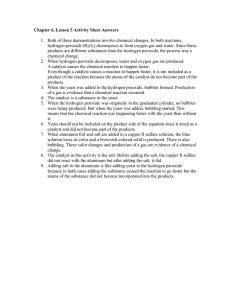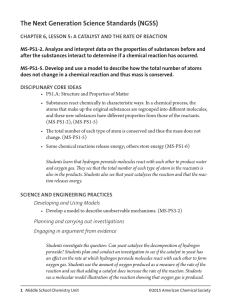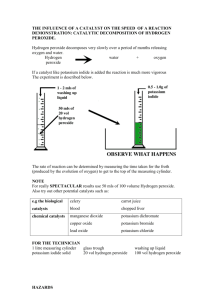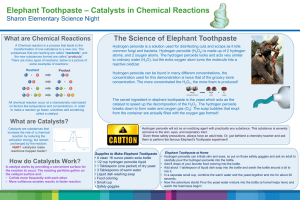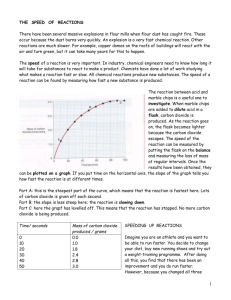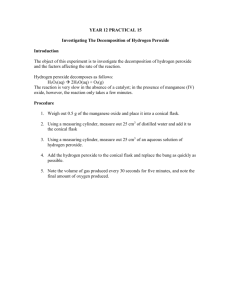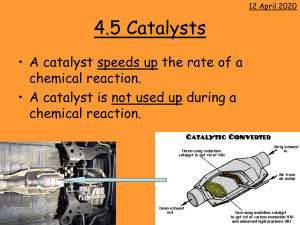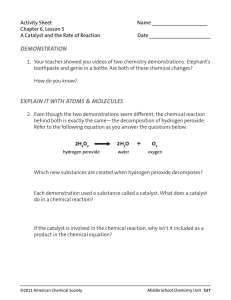Catalyst
advertisement
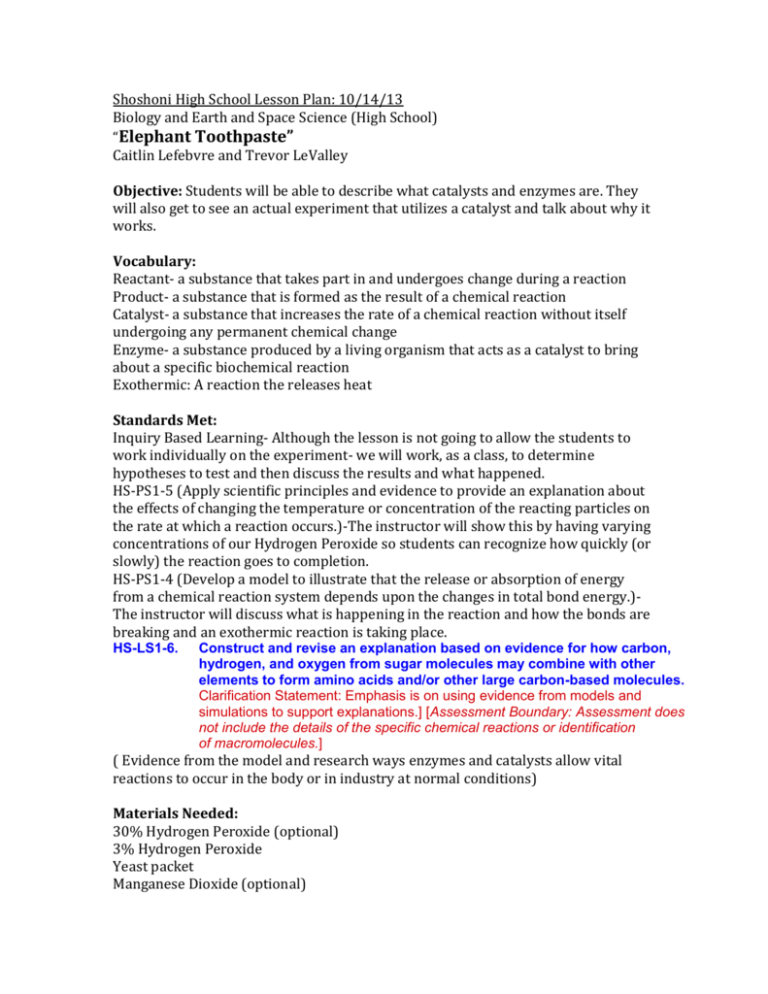
Shoshoni High School Lesson Plan: 10/14/13 Biology and Earth and Space Science (High School) “Elephant Toothpaste” Caitlin Lefebvre and Trevor LeValley Objective: Students will be able to describe what catalysts and enzymes are. They will also get to see an actual experiment that utilizes a catalyst and talk about why it works. Vocabulary: Reactant- a substance that takes part in and undergoes change during a reaction Product- a substance that is formed as the result of a chemical reaction Catalyst- a substance that increases the rate of a chemical reaction without itself undergoing any permanent chemical change Enzyme- a substance produced by a living organism that acts as a catalyst to bring about a specific biochemical reaction Exothermic: A reaction the releases heat Standards Met: Inquiry Based Learning- Although the lesson is not going to allow the students to work individually on the experiment- we will work, as a class, to determine hypotheses to test and then discuss the results and what happened. HS-PS1-5 (Apply scientific principles and evidence to provide an explanation about the effects of changing the temperature or concentration of the reacting particles on the rate at which a reaction occurs.)-The instructor will show this by having varying concentrations of our Hydrogen Peroxide so students can recognize how quickly (or slowly) the reaction goes to completion. HS-PS1-4 (Develop a model to illustrate that the release or absorption of energy from a chemical reaction system depends upon the changes in total bond energy.)The instructor will discuss what is happening in the reaction and how the bonds are breaking and an exothermic reaction is taking place. HS-LS1-6. Construct and revise an explanation based on evidence for how carbon, hydrogen, and oxygen from sugar molecules may combine with other elements to form amino acids and/or other large carbon-based molecules. Clarification Statement: Emphasis is on using evidence from models and simulations to support explanations.] [Assessment Boundary: Assessment does not include the details of the specific chemical reactions or identification of macromolecules.] ( Evidence from the model and research ways enzymes and catalysts allow vital reactions to occur in the body or in industry at normal conditions) Materials Needed: 30% Hydrogen Peroxide (optional) 3% Hydrogen Peroxide Yeast packet Manganese Dioxide (optional) Flask or any glassware with one hole Gloves Food coloring (optional) Dish soap Warm water Clean up equipment Introducing the Lesson: The instructor will begin with a presentation that fully describes what a catalyst is and how it works. We will provide lots of examples and also have students come up with their own examples. This should answer any questions the students have and clarify how things work. (10 minutes) Engage: The instructor will specifically talk about the experiment that is planned. As well as going over how the experiment works and have students make predictions about what is going to happen when the use of different types of catalyst (Yeast, Iodine, or Manganese Dioxide) and different concentrations of Hydrogen Peroxide (3% or 30%). (15 minutes-20minutes) Further Investigation: Research ways enzymes and catalysts allow vital reactions to occur in the body or in industry at normal conditions. The students could have the opportunity of researching an enzyme or catalyst of interest to then present to the rest of the students. Questions That Students Should Be Able To Answer: 1. What is the difference between a catalyst and an enzyme? 2. Why are catalysts so important in nature? Why are enzymes so important in the body? 3. How do catalysts work? 4. Is energy released from the breaking of bonds is it is released from the creation of bonds? 5. How do changing concentrations of reactants change the overall reaction? Procedure: Warning- The reaction may produce a high temperature steam out of the top of the flask so stand clear once the reaction is taking place and wait for the reaction to cool down before cleaning up. Put on safety gloves and glasses (lab coat if available). Place hydrogen peroxide into a flask or beaker. Combine yeast/MnO2 into warm water and stir. Add soap and food coloring to hydrogen peroxide. Add Water mixture to hydrogen peroxide and step back. Keep gloves on for clean up. The foam is safe to touch and wash down the sink if using yeast. If using MnO2 wash down the sink with a lot of water.



